
Catalog Advanced Search
-
Contains 1 Component(s)
This Technology Idea Exchange will explore Radio Frequency Identification (RFID) as a form of wireless communication that incorporates the use of electromagnetic or electrostatic coupling in the radio frequency portion of the electromagnetic spectrum to uniquely identify an object, animal, or person. Talia Karchem, Laboratory Software Consultant and Founder, Karchem Consulting, will explore how RFID can be used in laboratory automation with case studies focusing on: • Reagent/Consumables Management • Sample Tracking • Chain of Custody
This Technology Idea Exchange will explore Radio Frequency Identification (RFID) as a form of wireless communication that incorporates the use of electromagnetic or electrostatic coupling in the radio frequency portion of the electromagnetic spectrum to uniquely identify an object, animal, or person. Talia Karchem, Laboratory Software Consultant and Founder, Karchem Consulting, will explore how RFID can be used in laboratory automation with case studies focusing on:
• Reagent/Consumables Management
• Sample Tracking
• Chain of Custody-
You must log in to register
- Non-member - Free!
- Member - Free!
- Student Member - Free!
- Lab Member - Free!
- More Information
-
You must log in to register
-
Contains 23 Component(s) Recorded On: 06/20/2022
SLAS Meet-Ups allows you to stay connected to the latest research and opportunities happening within the SLAS global community. Meet-Ups include the following: SLAS Technology Idea Exchange, the SLAS Get Ahead series, Special Interest Group Science Circle series and any in-person or virtual Regional Community Meet-Ups.
SLAS Meet-Ups allows you to stay connected to the latest research and opportunities happening within the SLAS global community. Meet-Ups include the following: SLAS Technology Idea Exchange, the SLAS Get Ahead series, Special Interest Group Science Circle series and any in-person or virtual Regional Community Meet-Ups.
-
You must log in to register
- Non-member - Free!
- Member - Free!
- Student Member - Free!
- Lab Member - Free!
- More Information
-
You must log in to register
-
Contains 1 Component(s)
Presentation from the Microscale Innovation for Translational Applications session
AmplifiDx is developing a high-performance, low-cost microfluidic cartridge-based point-of-care testing system. The speaker will describe how the company has distinguished itself in an extremely crowded space, and how it continues to defy the odds even in this challenging economy for start-ups. This involves differentiated technology, but more importantly, creative partnerships and an understanding of the market.
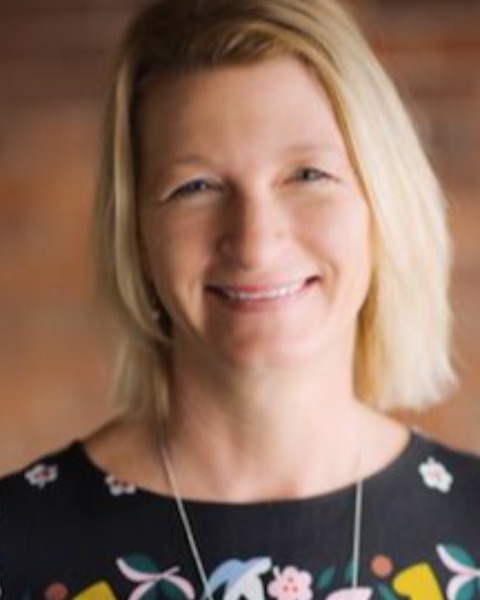
Nancy Schoenbrunner
CEO
AmplifiDx, Inc.
Nancy Schoenbrunner, CEO of AmplifiDx, has a proven track record as an executive in the medical device and diagnostic field (Roche Diagnostics for 20 years; Scipher Medicine for 2 years). Nancy is adept at planning and directing the organization’s technology commercialization and innovation strategy, R&D and IP portfolio. She has experience in creating value by managing cross-functional global teams, managing external development partners, forming strategic alliances, and driving product innovation. She has a Ph.D. in Biophysics and is inventor on 31 issued and pending patent families. She has executed multiple successful commercialization projects from concept to market resulting in multiple first in class diagnostic product approvals including: • the cobas® EGFR cancer test (liquid biopsy), highlighted for innovation in the Roche annual reports in 2015 and 2016 • the cobas® 6800/8800 system, a top selling platform for Roche’s lab testing business (642M CHF revenue in 2017) • the cobas® Liat® point of care system, a major contributor to revenue growth for Roche in 2018 (>1500 system placements, 262% annual revenue growth). • Managing a team of data scientists to develop a predictive algorithm for treatment response in complex diseases, resulting in a clinically validated diagnostic product (PrismRA®) and numerous publications
-
You must log in to register
- Non-member - $10
- Member - $8
- Student Member - $8
- Lab Member - $8
- More Information
-
You must log in to register
-
Contains 1 Component(s)
Closing Keynote presentation
When it comes to diagnostic devices, what is better? An implantable device? A wearable device? Or a point-of-care device, that takes a sample from you and measures in-vitro? They all have pros and cons, but the underlying answer is innovations of technology available for that particular diagnostic. In this talk, I will present my work starting companies from in-vitro to implantable -- from breast pumps , to a device that measures fetal-maternal hemorrhaging, to point-of-care virus detection, and finally on my newest endeavor, engineering a painless, minimally invasive, small form-factor continuous wearable glucose monitor for my daughter who was recently diagnosed with Type I diabetes. We are developing this platform to sense multiple analytes in a real-time, continuous manner, thus changing the paradigm for on-body biosensing and continuous biomonitoring for medicine.
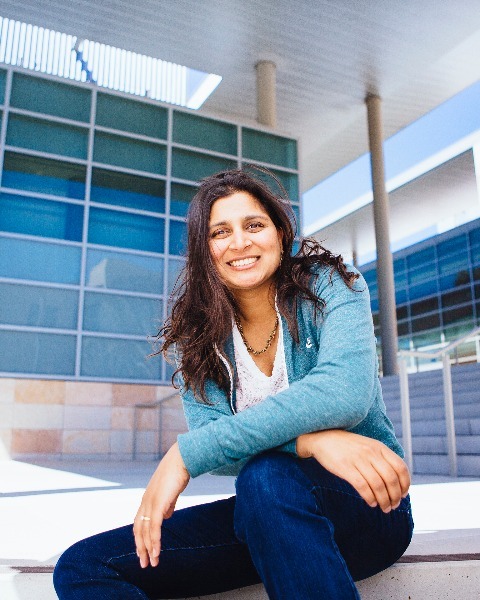
Sumita Pennathur
Professor of Mechanical Engineering
UCSB
Dr. Pennathur is a full Professor of Mechanical Engineering at the University of California Santa Barbara, with degrees from Stanford (PhD) and MIT (MS, BS).Since arriving at UCSB, Pennathur has contributed significantly to the fields of nanofluidics and interfacial science. She has performed pioneering work in both theoretical and experimental characterization of fluid flow in MEMS and NEMS devices. These contributions have been disseminated in the form of over 60 archived journal publications, books or conference papers, 6 patent applications, and more than 80 invited presentations. Notable awards include the DARPA Young Faculty Award (2008), the UC Regents Junior Faculty Fellowship (2009), the PECASE (Presidential Early Career Award in Science and Engineering) award (2010), the Santa Barbara Chamber of Commerce Innovator of the Quarter Award (2012), and the ADA Pathway to Stop Diabetes Visionary Award (2017), and elected as a member of the American Institute for Medical and Biological Engineering (AIMBE). Her work has led her to found many companies - Asta Fluidics, Alveo Technologies and more recently Laxmi Therapeutic Devices where she is currently CEO.
-
You must log in to register
- Non-member - $10
- Member - $8
- Student Member - $8
- Lab Member - $8
- More Information
-
You must log in to register
-
Contains 1 Component(s)
Presentation from the Microscale Innovation for Translational Applications
Introduction: Conventional purification methods of small extracellular vesicles (sEVs) suffer from significant shortcomings including low purity, low capture efficiency, long processing times, large sample volume requirement, need for specialized equipment and trained personnel, and high costs. Our group has previously developed a label-free insulator-based dielectrophoretic (iDEP) device for rapid and selective entrapment of sEVs based on their unique dielectric properties and size1-3. Here we report a comprehensive three-fold characterization of sEVs isolated using the iDEP device from human biofluids including serum, plasma, and urine by utilizing conventional flow cytometry (cFCM), advanced imaging flow cytometry (iFCM), and next generation miRNA sequencing indicating high yield and purity.
Results: cFCM indicated 55% exosomes from serum, 31% from plasma, and 30% from urine to be CD63+. Similar analysis showed 22% exosomes from serum, 41% from plasma, and 34% from urine to be CD81+. iFCM revealed high CD63+ expressions with 3.26 x 107 EVs/mL for serum, 5.08 x 106 EVs/mL for plasma, and 1.3 x 107 EVs/mL for urine. CD81+ expressions also revealed high yield with 1.32 x 108 EVs/mL, 2.05 x 106 EVs/mL, and 4.02 x 106 EVs/mL for serum, plasma, and urine, respectively. Percentage of sEVs positive for each marker were comparable to expressions for sEVs purchased from ATCC Inc. Following miRNA sequencing, hsa-miR-6236, hsa-miR-148a, and hsa-let7b were found to be most highly enriched across samples. PCA, with 54% coverage, indicated urine sEVs segregated to +PC1, while serum and plasma sEVs intermixed in a -PC1 cluster. Plasma samples were furthermore found to cluster on -PC2, while most coming from serum remained on +PC2.
Discussion: Analysis of sEVs isolated using the iDEP device was found comparable to those isolated using conventional techniques, including differential ultracentrifugation (DU) and size-exclusion chromatography (SEC). cFCM analysis has previously indicated 38.1% exosomes positive for both CD63 and CD81 when using DU for isolation from Broncho Alveolar Lavage fluid samples4. iFCM analyses have reported comparable CD63+ expressions (~1 x 107 EVs/mL for DU and 3 X 107 EVs/mL for SEC) and CD81+ (1.5 x 106 EVs/mL for DU) from plasma and culture media, respectively5,6. Additionally, miRNAs known to be highly expressed in cancers were observed to be enriched across sample types7. This affirms our isolation methodology as a viable alternative to those currently established.
Conclusion: The utility of a label-free iDEP device in isolating sEVs from serum, plasma, and urine was demonstrated by performing NTA and multiparametric characterization using cFCM, iFCM, and miRNA sequencing. The comprehensive characterization verified that sEVs were successfully isolated from biofluids with minimal impact to vesicles’ integrity. The iDEP device hence has potential to be further evolved as a liquid biopsy platform for rapid isolation of sEVs based on their size and dielectric properties in clinical settings.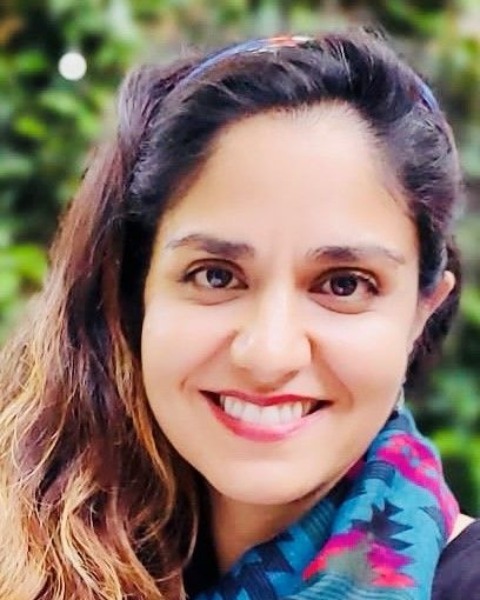
Leyla Esfandiari
Associate Professor of Biomedical Engineering
University of Cincinnati
Dr. Leyla Esfandiari completed her doctoral degree in Bioengineering from the University of California Los Angeles in 2014. She is currently an Associate Professor of Biomedical Engineering at the University of Cincinnati. She holds appointments in both Electrical Engineering and Environmental and Public Health Sciences at College of Medicine. Also, she is a member of the Cincinnati Cancer Center and the Center for Stem Cell and Organoid Medicine (CuSTOM) at the Cincinnati Children's Hospital. Her research is mainly focused on developing miniaturized devices, such as sensors and actuators, that can be applied in liquid biopsy and regenerative medicine. Her research has been supported by the National Institute of Health (NINDS, NIGMS, NCI), the National Science Foundation (ECCS, BMAT), and the Department of Defense (CDMRP). Dr. Esfandiari has won many awards, such as the National Institute of Health, Maximizing Investigator Research Award (MIRA) in 2023, the National Science Foundation CAREER Award in 2021, and the Engineering and Applied Sciences Distinguished Research Award in 2020 and 2023.
-
You must log in to register
- Non-member - $10
- Member - $8
- Student Member - $8
- Lab Member - $8
- More Information
-
You must log in to register
-
Contains 11 Product(s)
The inaugural SLAS 2023 Microscale Innovation in Life Sciences Symposium will provide attendees with a forum to communicate these scaled-down approaches and demonstrate their effectiveness through examples in podium talks, poster presentations and a technology provider exhibition.
Seminal scientific discoveries started with, and were initially identified in, laboratories using large-scale petri dishes and high volumes of reagents. These experiments consumed more sample and time than compared to current day processes. To conserve and speed up the process, scientists are now ‘scaling-down’ the science into smaller units without jeopardizing the quality or the results. This can take the form of multi-well sample plates that contain upwards of 3,456 microwells per plate, utilizing the recent advances in microfluidics, or by harnessing the complexity of testing on animals by replacing them with much smaller surrogate organ-on-a-chip type systems. The inaugural SLAS 2023 Microscale Innovation in Life Sciences Symposium will provide attendees with a forum to communicate these scaled-down approaches and demonstrate their effectiveness through examples in podium talks, poster presentations and a technology provider exhibition.
-
You must log in to register
- Non-member - $50
- Member - $30
- Student Member - $30
- Lab Member - $30
- More Information
-
You must log in to register
-
Contains 2 Component(s)
Poster Presentations from the 2023 Microscale Innovation in Life Sciences Symposium
Poster Presentations from the 2023 Microscale Innovation in Life Science Symposium
-
You must log in to register
- Non-member - Free!
- Member - Free!
- Student Member - Free!
- Lab Member - Free!
- More Information
-
You must log in to register
-
Contains 1 Component(s)
Presentation from the Microfluidics session
The next generation of single cell analysis will involve the measurement of functional properties of living cells, including growth, death, protein secretions, and the interactions between multiple cell types. Similar to transcriptomic measurements, there is a need for measuring high dimensional functional properties of single cells so that the relevant subpopulations can be identified and retrieved for follow-on applications, including cell line development and immune marker discovery. However, existing platforms to date have either hand insufficient scale, low dimensionality and/or are too high cost to be practically implemented for routine biology experiments. In this talk, I will summarize our recent advances in using high dimensional time lapse imaging to measure the functional heterogeneity of living cells at the scale of 100,000 single clones per experiment. I will provide several examples of the applications of our platform in the ability to find rare drug-resistant cells, existing at frequencies of less than 1 in 10,000 in the parental population, as well as in measuring the potency of immune cells that are both effective at secreting cytokines and also in killing cancer cells in a target dependent manner. Ultimately, this platform can be used in the development of better drugs that more effectively suppress resistance, as well as better cell-based therapies that have greater clinical effectiveness.
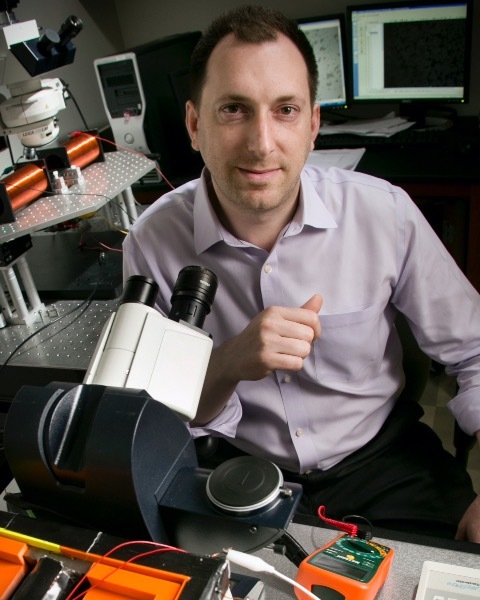
Ben Yellen
CEO
Celldom
Dr. Benjamin Yellen received his B.S. in Chemistry from Emory University, his Ph.D in Electrical & Computer Engineering from Drexel University, and served as a tenured faculty member in the Duke University Mechanical Engineering and Materials Science Department from 2005 to 2022, where his research interests were focused at the intersection of electricity and magnetism, colloids and soft matter, computer vision, and high throughput instrumentation. Ben published dozens of papers in prestigious journals including Nature, PNAS, Science Advances, and others. After founding Celldom in 2016, Ben joined Celldom full time first as the CTO in 2020, and later as the CEO in 2021. At Celldom, Ben has continued his scholarly interests in applying deep learning and AI models to cell biology, and in developing high impact cell biology tools that can measure function, phenotype, and molecular properties of single cells at scale.
-
You must log in to register
- Non-member - $10
- Member - $8
- Student Member - $8
- Lab Member - $8
- More Information
-
You must log in to register
-
Contains 1 Component(s)
Presentation from the Next Generation Miniaturization Technologies session
Presentation from the Next Generation Miniaturization Technologies session

Anastasia Velentza
Senior Director
Plexium
Anastasia Velentza, Ph.D., Senior Director, Plexium Anastasia Velentza is the Head of Discovery Technology at Plexium, a TPD company. Anastasia has 23 years in Drug Discovery, with expertise in Screening and Discovery Biology across multiple therapeutic areas, modalities and targets. Before Plexium, she held positions of increasing responsibility at Novartis, Dart Neuroscience and Ferring Pharmaceuticals. Anastasia was NIH Research Award scholar in a drug discovery training program at Northwestern University in Chicago, IL. She earned her Bachelor of Science in Chemistry at the University of Patras in Greece, and a Ph.D. from the same institution in Bioorganic Chemistry, funded by a competitive scholarship and EU programs.-
You must log in to register
- Non-member - $10
- Member - $8
- Student Member - $8
- Lab Member - $8
- More Information
-
You must log in to register
-
Contains 1 Component(s)
Presentation from the Advances in Organ-on-Chip Platforms session
The investigation of radiation’s effects on the GI tract, the identification of dosimetry biomarkers, and the testing of new radiation countermeasure drugs are all limited in humans due to the restricted access to human samples or the use of animal models that are not representative of human physiology. Thus, there is a need for improved in vitro models to elucidate the effects of x-ray radiation on the human GI system that mimic the in vivo physiological environment and interaction between human GI epithelium and gut microbiome. Here, we developed a Gut-on-Chip system (HuMiX) to reproduce multiple in vivo parameters classically associated with human GI following acute irradiation. The HuMiX device is a co-culture system consisting of three chambers separated by two porous polycarbonate membranes, delimiting the microbial, intestinal, and vascular compartments. Previous design iterations of HuMiX have demonstrated that the system can imitate the in vivo immunologic, metabolic, and transcriptional responses to commensal gut bacteria [Shah et al, 2016]. In the newly designed system, ~16,000 Caco-2 cells/mm2 were seeded on a collagen-treated membrane in the middle chamber and incubated under normal cell culture incubator conditions. The middle and bottom chambers were then flowed with Caco-2 cell medium at 67 ul/min for 6 days, when 8 x 107/mL of mixed bacterial flora, isolated from human stool samples from 6 different donors, were injected into the top chamber. Post 12 hours co-culture, the devices were sham- or 8 Gy-irradiated at 1 Gy/min using 320 keV x-ray beam with 2 mm Al filter. Twenty-four hours after irradiation, the supernatant was collected for inflammatory cytokine detection, the bacterial cells were collected from the top chamber for microbiome profiling and Caco2 cells were stained. Preliminary microbiome profiling identified the presence of three phyla: Bacteroides, FAFV (Firmicutes, Actinobacteria, Fusobacteria, and Verrucomicrobia), and Proteobacteria. DNA concentration, species richness, and species diversity obtained from the devices decreased as compared to those profiles isolated from direct fecal bacteria isolation and/or cultured in bacterial culture broths, but still maintained highly diverse profiles. Current analyses are on-going to identify if radiation modified the Firmicutes/Bacteriodetes ratio as shown by in vivo studies. The Caco2 phenotype revealed the formation of villi, the presence of cell-cell tight junctions and the production of mucus, demonstrating the establishment of physiological intestinal hallmarks. Irradiation showed ability to disrupt cell junctions and to permeabilize the intestinal barrier as suggested by dextran assay. Citrulline, an amino acid whose plasma level decrease following intestinal radiation-induced damage, was also quantified. This study is an ongoing project and the injection of immune cells will be performed in the future to assess if the HuMiX can recapitulate the expression change of well-known radiation dosimetry biomarkers in blood. Overall, our data suggest that the HuMiX offers a promising tool to study radiation effect on human gut and test radiation countermeasure approaches.
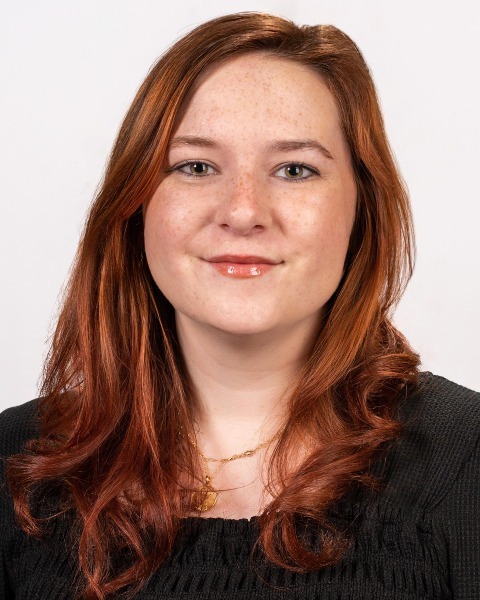
Nicole Sherwood
PhD Student
University of Arizona College of Medicine Phoenix
Nicole Sherwood, B.S is a second year Ph.D. student in the Clinical Translational Sciences program at the University of Arizona College of Medicine Phoenix. She is a graduate research assistant in the Center for Applied NanoBioMedicine under the mentorship of Dr. Jerome Lacome and Dr. Frederic Zenhausern. Nicole graduated from Arizona State University in May 2022 with a B.S. in cell biology and completed an undergraduate thesis project on the signal transduction differences between melanoma subtypes.
-
You must log in to register
- Non-member - $10
- Member - $8
- Student Member - $8
- Lab Member - $8
- More Information
-
You must log in to register
